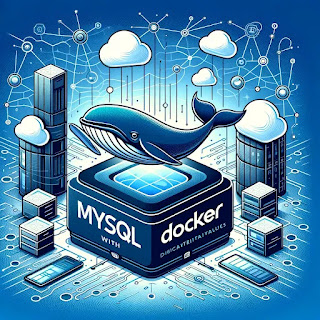Docker has revolutionized the way we build, ship, and run applications. It allows us to encapsulate our applications and their dependencies in containers, providing a consistent and isolated environment for running them. However, working with Docker containers sometimes raises challenges, especially when trying to access services running on the host machine, such as databases or APIs exposed on localhost.
In this blog post, we will explore the steps to connect from inside a Docker container to the localhost of the host machine. We will cover various scenarios, including connecting to services running on different ports and accessing services on both Linux and Windows host machines. We will also provide code examples and explanations for each step.
Step 1: Understand Docker Networking Basics
Docker containers have their own networking stack, which means that by default, they are isolated from the host machine's network. This isolation is done for security and stability reasons. However, it also means that if you try to access the host machine's localhost from inside a Docker container, you will encounter a connection error.
Step 2: Use Host Networking Mode
One way to allow a Docker container to access the host machine's localhost is by using the host networking mode. In this mode, the container shares the host machine's network namespace, allowing it to directly access the host's network interfaces. However, this mode has some security implications, as it exposes all host ports to the container.
docker run --network host <your_image>
Step 3: Use Docker Host IP Address
Another approach is to use the host machine's IP address instead of localhost. Docker provides a special DNS name "host.docker.internal" that resolves to the IP address of the host machine. This can be used as a replacement for localhost when connecting from inside the container.
Example (Python):
import requests
response = requests.get('http://host.docker.internal:8000/api')
print(response.text)
Step 4: Use Custom Docker Bridge Network
If you want more control over the networking and avoid using the host network mode, you can create a custom Docker bridge network and attach the container to it. This allows you to access services running on the host machine by using the host's IP address and the exposed port.
Example:
# Create a custom bridge network
docker network create my_bridge_network
# Run the container attached to the custom network
docker run --network my_bridge_network <your_image>
Step 5: Port Forwarding
In some cases, you may want to access a service running on a specific port on the host machine from inside the Docker container. In such scenarios, you can use port forwarding to map a port on the host to a port on the container.
Example:
# Forward port 8000 on the host to port 80 on the container
docker run -p 8000:80 <your_image>
Step 6: Consider Firewall and Security Settings
When connecting from inside a Docker container to the host machine's localhost or IP address, ensure that any firewalls or security settings on the host machine do not block the connection. In some cases, you may need to adjust firewall rules to allow incoming connections from Docker containers.
Let's walk through an example to demonstrate how to connect from inside a Docker container to the localhost of the host machine using the "host.docker.internal" DNS name.
Step 1: Create a Simple Flask API on the Host Machine
First, let's create a simple Flask API running on the host machine. This API will listen on port 8000 and respond with a "Hello, Docker!" message.
Create a file named app.py with the following content:
from flask import Flask
app = Flask(__name__)
@app.route('/api')
def hello():
return 'Hello, Docker!'
if __name__ == '__main__':
app.run(host='0.0.0.0', port=8000)
Step 2: Run the Flask API on the Host Machine
Open a terminal or command prompt and navigate to the directory where app.py is located. Then, run the Flask API using the following command:
python app.py
The Flask API should now be running on http://localhost:8000/api.
Step 3: Create a Docker Container to Access the API
Now, let's create a Docker container that will access the Flask API running on the host machine. We will use the python:3.9 base image and install the requests library to make HTTP requests to the API.
Create a file named `Dockerfile` with the following content:
# Use the Python 3.9 base image
FROM python:3.9
# Install the requests library
RUN pip install requests
# Set the working directory inside the container
WORKDIR /app
# Copy the Python script into the container
COPY app.py /app/app.py
# Run the Python script when the container starts
CMD ["python", "app.py"]
Step 4: Build and Run the Docker Container
Open a terminal or command prompt in the same directory where the Dockerfile and app.py files are located. Build the Docker image using the following command:
docker build -t my_flask_app .
Next, run the Docker container using the following command:
docker run -p 8000:8000 my_flask_app
Step 5: Access the Flask API from Inside the Docker Container
The Docker container is now running and should be able to access the Flask API on the host machine. Inside the container, we can use the requests library to make an HTTP request to the API.
Create a new terminal or command prompt window, and run the following command to access the Docker container:
docker exec -it <container_id> /bin/bash
Replace <container_id> with the ID of the running container. Once inside the container, run the following Python script:
import requests
response = requests.get('http://host.docker.internal:8000/api')
print(response.text)
This script will make an HTTP GET request to the Flask API running on the host machine using the "host.docker.internal" DNS name. It should print the "Hello, Docker!" message returned by the API.
In this example, we have seen, how to connect from inside a Docker container to the localhost of the host machine using the "host.docker.internal" DNS name. By leveraging this DNS name, we can access services running on the host machine from within the Docker container, making it easier to interact with services and applications during development and testing.
Labels: container, Docker, localhost



